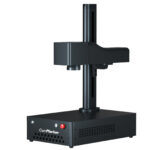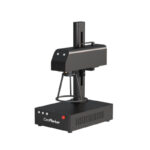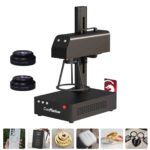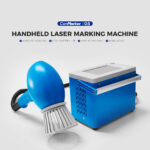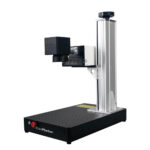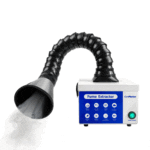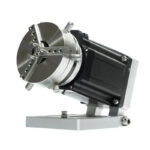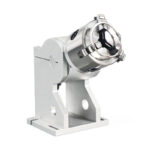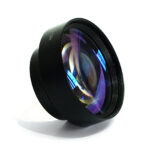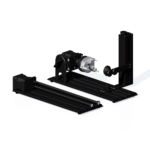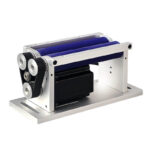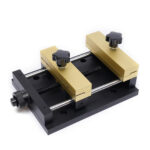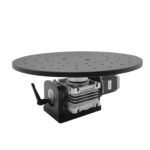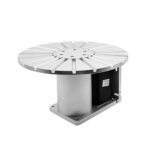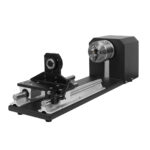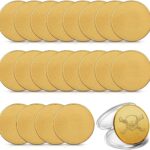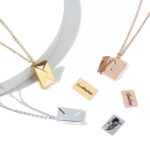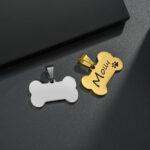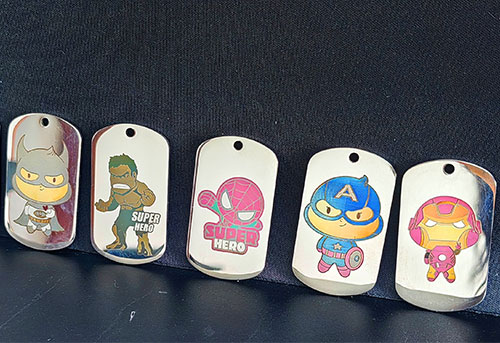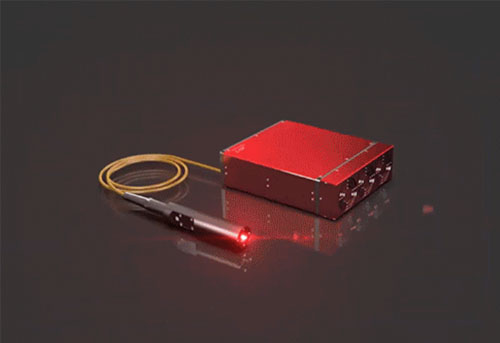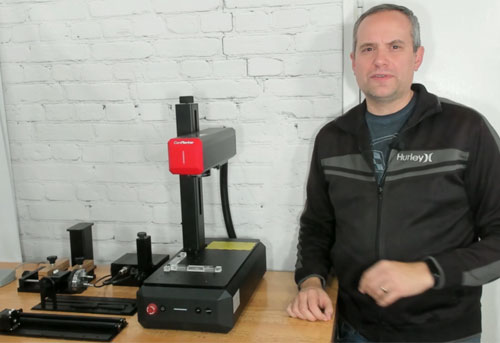Have you ever noticed those coin markings or raised patterns on metallic plates? They’re some prime workings of Fiber laser models that go deep into metals to produce embossed results.
The way these laser optics have refashioned how metals are now precisely carved and marked with pinpoint accuracy is remarkable, but here’s a burning question: “How Deep Can these cutting-edge laser machines engrave metal?”
Now, before we move ahead, it’s crucial for one to know that the depth Fiber laser marking machine can reach depends on a bunch of things, such as material structural composition, laser parameters, and surface preparation.
Once you’ve got a clear understanding of what depth it can go, you can work your creativity across many domains and leverage this for multiple applications, so let’s buckle up and delve together into the science of advanced optical principles and high-powered laser beams so you can squeeze the last drop of potential out of these machines for engraving metal.
Table of Contents
Understanding Fiber Lasers
When you enter the engraving world, you’ll probably hear about Fiber laser systems being the most talked about. This is because they’re the most stable choice for marking, which makes use of optical fiber to amplify light and create an incredibly powerful beam that works around multiple sets of materials.
Here’s how it works– the process all starts with the activation of tiny fibers packed with laser-active materials when the power supply is provided. This excitement allows them to emit photons (tiny particles of light ) that bounce back and forth inside the fiber, getting more amplified with each bounce. When they’re at their peak, they burst out of the fiber as a concentrated laser beam.
The reason why you should consider Fiber laser machine as your first choice can be justified by their host of amazing benefits. First off, these laser models, especially the ComMarker B4 model, are super precise and accurate. You can even relate to the microscopic-level precision here. This means you can carve out even the tiny details on metal surfaces without compromising quality.
Not only that, but these powerful systems are crazily fast, processing through materials in the blink of an eye. This speediness allows operators to save time and work on more pieces in less time, so you can easily cater to higher volume jobs.
And let’s not forget about versatility. Fiber laser units are compatible with a wide range of metals, including stainless steel, aluminium, brass, and every metal you name. So this would be exciting news for one working with jewelry, custom signage, industrial parts, or product traceability, taking the engraving game to a whole new level.
ComMarker B4 – 20W/30W/50W/60W/100W fiber laser engraver&laser marking engraver machine
B4 fiber laser engraver 0.01mm Precision 15000mm/s Engraving speed 20W Laser power ComMarker B4 fiber laser engraver 0.01mm Precision 15000mm/s
Factors Influencing Engraving Depth
While standing at the helm of our B4 Fiber laser system, ready to carve your favorite piece of metal into a masterpiece, we’ll all know that all it takes is just the press of a start button. But wait, while you’re dealing with depths, it’s not as easy as it seems.
There are various factors that influence this engraving part, and it’s a way too crucial for the operator to understand all these parameters beforehand.
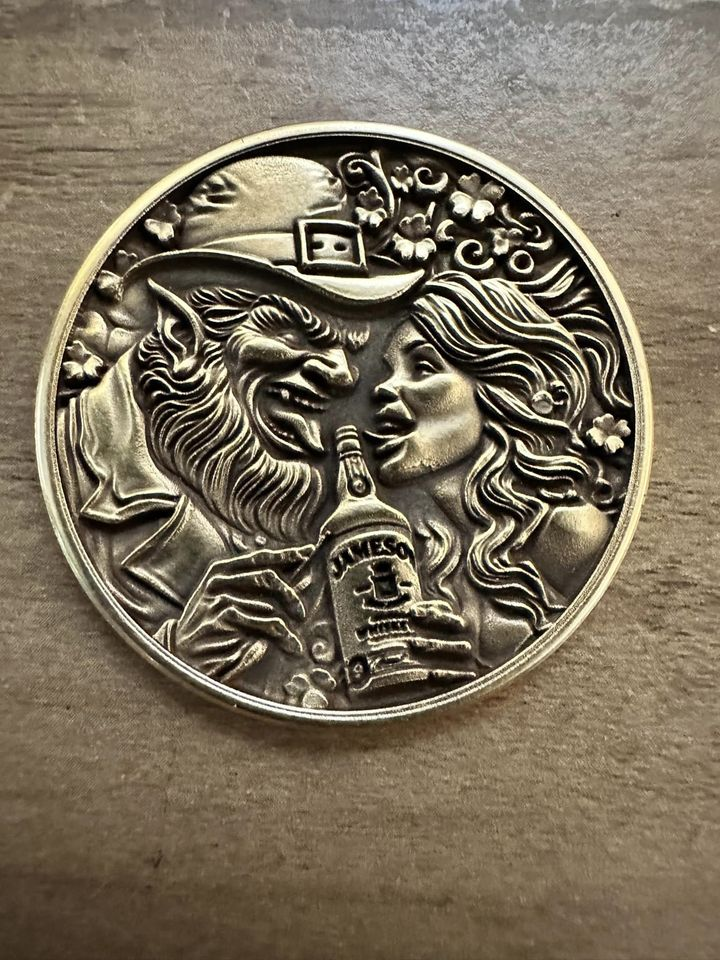
– Power Of The Laser: How Wattage Affects Depth
It’s pretty sensible that laser power is the core component of the system that acts just like the engine of a car. It denotes the energy a laser beam delivers within a specific timeframe, and it varies according to the laser type and architecture.
Know that this parameter is the most crucial to meet cycle time requirements. A 500W laser may not be five times faster than a 100W, but it’s still much faster.
Spanning from a few watts to several kilowatts, the machine’s laser power would make you roughly calculate the intensity of the beam, thereby affecting the engraving processes’ speed, depth, accuracy, and versatility.
Machines with more horsepower and wattage can etch thicker metal going deep at an approximate depth of 0.3mm and create more intricate designs faster, so If you’ve got an engraving metal that’s thicker and harder, grab a higher-powered machine such as the 100W B4 Fiber laser engraver and get your job done.
Most deep engraving applications require at least 100W. At ComMarker, we provide different types of lasers. Our high-power Fiber laser starts at 100W. We also offer a 20W, 30W, and 60W fiber laser, a less powerful range for sensitive metals.
– Type Of Metal: Variations In Metal Properties And Their Impact
When you plan to engrave metal, the same working formula isn’t applicable to all. Each metal has its own set of properties, and when the laser beam interacts with them, it responds differently to each of them.
Metals properties, from hardness to conductivity, can either make engraving a breeze or a bit of a challenge. Stainless steel, for example, might need a bit more energy from the laser to get those depths just right, while softer metals like aluminum might require a lighter touch.
– Speed Of Engraving: Balancing Speed And Depth
It’s quite common to confuse speed with frequency, but they’re two different parameters. Frequency is how many times the laser beam hits the target in a given period, whereas speed refers to the speed at which the laser beam moves.
A slower speed means that the laser beam remains longer over the same area, resulting in an increase in the amount of energy in that area, allowing you to engrave deeper and faster.
But there’s a point where too much energy may overheat and discolor the surface. That is to say, finding a delicate balance between going fast enough to be efficient yet slow enough for those marks to sink in just right. Too slow, and you risk burning through the metal; too fast, and you might not get the depth you’re looking for.
As you work with deep engraving, keep this general rule in mind: reduce the engraving speed of the machine so you can extend the time the laser stays on the surface of the object, allowing for greater penetration into the metal.
– Focus Of The Laser: Optimizing Laser Focus For Depth
As surprising as it may sound, the focal lens of the Fiber laser machine is also one of the impacting forces of deep metal engraving.
Just like your camera lens, where you focus it right to make all the difference, optimizing the focus of the laser, you let every ounce of fiber energy to concentrate exactly where you need it, maximizing the depth of your engraving and leaving a lasting impression.
The Lenses control how the laser beam is focused, and only a highly focused beam can reach the intensity required for deep engraving. Using the right lens can effectively double the engraving speed.
Typical Depths Achievable with Fiber Lasers
In reference to distinguished material properties and their alternative responses to laser energy, the estimation of the marking depth that can be achieved with these laser machines also varies.
We already understand that laser parameters and application-specific requirements also affect laser marking depth, so keeping that in mind, here are the maximum depths achievable with various common materials:
- Steel: Laser marking on steel can typically achieve a depth of 0.01mm to 0.5 mm, but this can alter as per the steel’s composition, surface finish, and laser parameters. This depth can get you to mark clear and durable patterns, logos, serial numbers or other identifiers on steel surfaces without compromising the structural integrity.
- Aluminum: Compared to steel, aluminum has reflective properties that typically result in shallower marks, ranging in depth from approximately 0.3mm with 30W power. Anodized aluminum surfaces can sometimes provide deeper marks due to their enhanced surface reaction with the laser.
- Silver: Silver is known for its shining appearance, enabling marking depths between 0.01mm and 0.2mm. Due to its high reflectivity, achieving deeper marks may require specific laser settings and techniques.
- Brass: It’s a copper-zinc alloy that gets the fiber laser beam get absorbed upto 1.06 microns. It has some good heat dissipation properties, so engraving become very handy. Though it is a highly reflective material, it will only be worked by our Fiber laser model.
Maximizing Engraving Depth
Maximizing engraving depths on metal is like unlocking the hidden treasures of Fiber laser machines. With higher peak power and focus length adjustability, they work tremendously well with metals and produce high contrast and deep marks.
With that said, there’s still a need to navigate some areas carefully to ensure success. Here are some tips to ensure you achieve those engravings while maintaining the quality.
Consider Material Composition:
When the task of engraving is performed, all it comes down to the material used during the process. It’s well understood that not all metals are created equal. Metals that are susceptible to corrosion are more difficult to engrave.
Deep engraving stainless steel and iron fall into this category. Both iron and stainless steel corrode faster from an exposed inside. Especially since stainless steel naturally has a protective layer, the engraving disrupts it.
If you plan to use a deep metal laser engraving machine on these metal types, consider adding an anti-corrosion seal after engraving.
Use Multiple Passes:
Sometimes, getting your laser beam to pass through the metal once is not just enough; it requires your Fiber lasers to perform multiple passes to achieve your desired level of output. In such cases, gradually increasing the laser power and allowing multiple engraving sessions is all you need for that level of depth. Meanwhile, you do have control over the process just to maintain the quality.
Optimizing Laser Settings:
Fine-tuning the laser parameters is the optimal secret to achieving deep engraving. Find the sweet spot between frequency, power, speed and focus of the Fiber laser system to have metals pop like a masterpiece. You can experiment with different settings as a test to strike the perfect balance between depth and quality.
Select Shorter Focal Length:
Since the lens contributes majorly to the engraving task, picking the right one is what it entails. The right one means here lens with a shorter focal length to let the concentration of the laser beam be more tightly, allowing for a deeper penetration into the metal.
Cooling and Ventilation:
Deep engraving can simply translate as the high heat emitting process; arranging for cooling equipment and a well-ventilated working space becomes a necessary part of your task. This practice would significantly prevent metal from overheating and ensure consistent quality, especially at greater depths.
Consistent Monitoring and Adjustment Upon Need
Since deep metal engraving is a delicate task, your attentive eye should witness this all as the machine goes deeper. Keep a check on the beam quality, surface temperature, and engraving depths, and be ready for any immediate adjustment to the settings or techniques as to maintain the quality throughout the process.
Applications Requiring Deep Engraving
Opting for Fiber laser systems as your choice of tool for deep metal engraving opens up many avenues across a multitude of industries and applications. So, whether you be a contractor, industrial manufacturer, site manager, or even someone with a spark of creativity, this machine serves all.
Not only do you get to see these machines showing their potential in commercial or industrial setups, but this has far reached the doors of creative homeowners.
Let’s explore each with more detail.
– Industrial Uses:
In the industrial realm, deep metal engraving is all about functionality. Imagine those engraving machines intricately marking bar codes and serial numbers on workpieces for traceability, brand logos stamping on products for identity, or even compliance markings to show they meet regulatory standards.
And while your grocery cashier scans through your products, the barcodes you see are the result of deep laser engravings, making the whole process much smoother and more efficient.
Even the fine jewelry you purchase for your loved one with engraved messages, personalized inscriptions, or a person’s initial– these are all crafted by deep engraving technique, so those receiving them can find them unique and meaningful.
Your aerospace, electronic, and medical industry isn’t out of this. The deep marking facilitates these industries for assembly, maintenance, and branding of these equipment, leaving a durable and precise mark that holds both aesthetic and sentimental value.
– Artistic Applications: Customization And Decorative Engraving
In the category where creativity and artistry prevail, deep laser engraving emerges as a captivating medium where the collaboration of laser technology and craftsmanship yields breathtaking results.
Every pulse of the laser beam hits with accurate precision and depth as artists get down with their metal laser engraver to mark inert metal surfaces, turning them into jaw-dropping pieces of beauty right in front of your eyes.
Whether it’s enhancing your everyday metal objects like tumblers, keychains, or dog tags or even marking your favorite metal phone cases, cutlery, or watches, deep engraving seamlessly integrates into these objects, serving practical, aesthetic, and personalization purposes in various domains.
Limitations and Challenges
– Physical Limits To Engraving Depth With Fiber Lasers
When leveraging Fiber laser models as your engraving tool for deep metal engraving, there are some hurdles and roadblocks to watch out for. First off, the physical constraints of the machine to reach a certain depth point and the strength of the metal to absorb the laser beam put you in a major thought process.
Though our Fiber laser models are well-designed to carve metals with intricacy, there’s always a limit to how far they can go deep without things getting messy.
This depth science completely changes as the laser parameters vary, such as laser power, wavelength, pulse duration, and the type of metal put into place. Exceeding these depth limits may make your engravings a whole disaster, and you can end up having metals with inconsistent marks.
– Technical Challenges In Deep Engraving
Fiber lasers are powerful tools that often need your technical proficiency to be at a higher level. By this, we mean the skill and patience to do this kind of engraving job. Deep metal engraving requires perfect laser parameters adjustment, thereby demanding an operator to prevent the laser beam from going too shallow or even not too deep.
Here, it’s all about maintaining consistency. If the heat goes too high, too much of it can cause everything out of the track, making your metal warp or your engraving look faulty. So, juggling between the perfect laser settings in terms of speed and power is crucial to remain under control.
Also, the variation of metals has different responses under the laser beam, so what might work for one might not work for another. It’s all about activating your technical abilities to master this skill of art.
Conclusion
As we’ve seen, Laser engraver are such versatile machines that have found their way into almost every industry. Serving as tools for engraving, cutting, welding, and texturing, to name a few, it has a lot of practical and industrial applications.
Amidst its processing methods, deep laser engraving stands out as a subtype of engraving that calls for different settings than typical engraving. However, that doesn’t mean you need a different machine. Though the working principle is almost the same, they’re likely to differ in laser power and speed.
Deep engravers take just a lil bit more time to create an impression on metal components and Instruments. However, the engraving depth is so clean and impressive that it gives a significant visual effect and a great feel to the touch.

